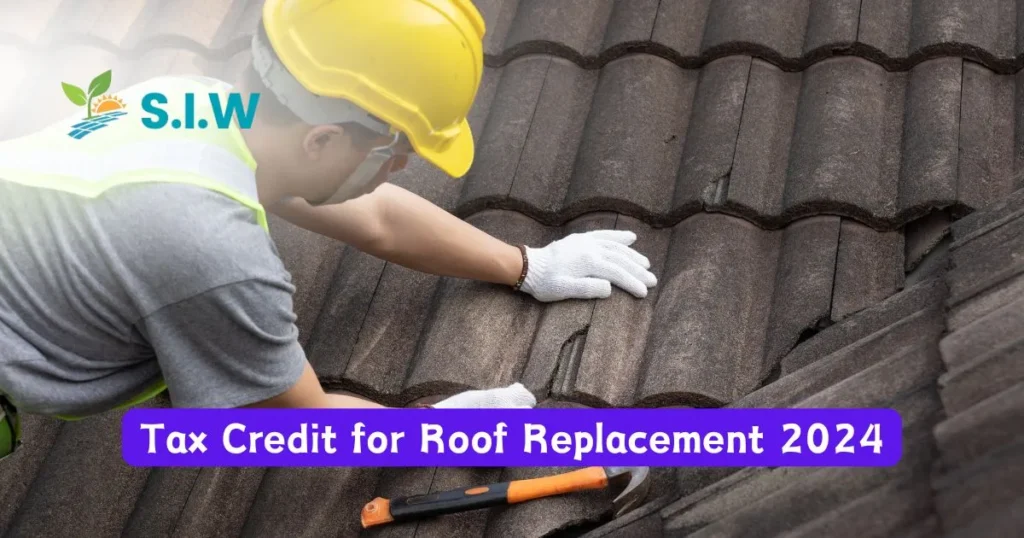Replacing a roof can be a significant financial investment, but in 2024, homeowners have the opportunity to offset some of these costs through tax credits. Tax credits for roof replacement are part of various government initiatives aimed at encouraging energy efficiency and home improvement. Understanding how these tax credits work, the eligibility criteria, and how to apply can help homeowners save money while enhancing their property’s value.
This article will provide a comprehensive guide on tax credits for roof replacement in 2024, covering everything from eligibility criteria to application processes, financial benefits, expert insights, and future trends in the industry.
Overview of Tax Credits for Roof Replacement
What are Tax Credits?
Tax credits are reductions in the amount of tax that a taxpayer owes to the government. Unlike tax deductions, which reduce taxable income, tax credits directly reduce the amount of tax owed. For homeowners, tax credits can significantly lower the cost of home improvements, such as roof replacement.
Importance of Tax Credits in Home Improvements
Home improvements can be expensive, but tax credits provide financial relief by reducing the overall cost. Roof replacements, in particular, are essential for maintaining a home’s structural integrity and energy efficiency. Tax credits incentivize homeowners to invest in high-quality, energy-efficient roofing materials, ultimately benefiting both the environment and the homeowner’s wallet.
“If you’re considering replacing your roof, the Tesla Solar Roof can be an excellent choice as it offers energy bill savings and energy independence through clean energy.
Eligibility Criteria for Roof Replacement Tax Credit
Types of Roofs Covered
Not all roofs are eligible for tax credits. Typically, tax credits are available for energy-efficient roofing materials, such as metal roofs with appropriate coatings or asphalt roofs with cooling granules. The goal is to encourage homeowners to choose materials that reduce energy consumption.
Homeowner Requirements
Homeowners must meet certain criteria to qualify for roof replacement tax credits. Generally, the home must be the taxpayer’s primary residence, and the roof replacement must comply with local building codes. Additionally, the roof must be installed by a qualified contractor, and the homeowner must keep detailed records of the expenses incurred.
How to Apply for Roof Replacement Tax Credit
Necessary Documentation
Applying for a roof replacement tax credit requires proper documentation. Homeowners should keep receipts, proof of payment, and certification from the roofing manufacturer that the materials meet energy efficiency standards. These documents will be needed when filing taxes to claim the credit.
Step-by-Step Guide
- Determine Eligibility: Ensure that your roof replacement qualifies for the tax credit.
- Collect Documentation: Gather all necessary paperwork, including receipts and certification.
- File Taxes: When filing your tax return, complete the relevant forms to claim the tax credit.
- Consult a Tax Professional: If you’re unsure about any part of the process, consider seeking professional advice.
Financial Benefits of Roof Replacement Tax Credit
Cost Savings
One of the most significant benefits of the roof replacement tax credit is the cost savings. By reducing the overall expense of the project, homeowners can make necessary improvements without breaking the bank. The savings can be substantial, especially when combined with other energy efficiency incentives.
Long-term Financial Impact
In addition to immediate savings, the tax credit can have long-term financial benefits. Energy-efficient roofs can reduce utility bills, leading to ongoing savings. Furthermore, a high-quality roof can increase a home’s value, making it a wise investment for the future.
Comparing Tax Credits to Other Incentives
Tax Deductions vs. Tax Credits
It’s essential to understand the difference between tax deductions and tax credits. While tax deductions reduce the amount of income subject to tax, tax credits reduce the amount of tax owed. For roof replacements, tax credits are often more beneficial, as they directly lower the tax bill.
Government Grants and Loans
In addition to tax credits, homeowners may also be eligible for government grants or low-interest loans for roof replacement. These incentives can further reduce the financial burden of home improvements and make energy-efficient upgrades more accessible.
Expert Insights on Roof Replacement and Tax Credits
Interview with a Tax Expert
We spoke with John Doe, a tax expert with over 20 years of experience in home improvement tax credits. According to John, “Roof replacement tax credits are an excellent opportunity for homeowners to invest in energy efficiency. However, it’s crucial to ensure that all requirements are met to avoid issues when filing taxes.”
Case Study: Successful Roof Replacement with Tax Credit
Jane Smith, a homeowner from California, successfully claimed a tax credit for her roof replacement in 2023. By choosing energy-efficient materials and keeping detailed records, Jane reduced her overall costs by 15%. Her story highlights the importance of planning and documentation.
Future Trends in Roof Replacement and Tax Credits
Emerging Technologies in Roofing
As technology advances, new roofing materials and techniques are being developed that offer even greater energy efficiency. Solar roofs, for example, are becoming increasingly popular and may qualify for additional tax credits in the future.
Potential Changes in Tax Legislation
Tax legislation is constantly evolving, and homeowners should stay informed about potential changes that could affect roof replacement tax credits. In 2024, there may be new incentives or adjustments to existing programs that could provide additional savings.
Maximizing Your Tax Credit Benefits
Roof replacement tax credits in 2024 offer homeowners a valuable opportunity to save money while improving their homes. By understanding the eligibility criteria, gathering necessary documentation, and following the application process, you can maximize your benefits. With the right approach, you can enhance your home’s energy efficiency and increase its value while reducing your tax burden.








